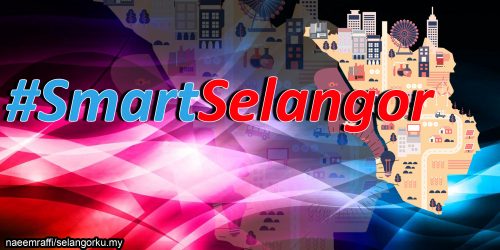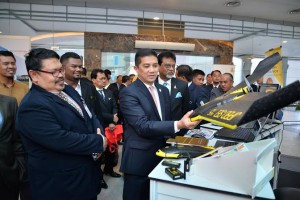The Selangor Government’s plan to turn the state into a Smart State will surely be a new benchmark in the history of its administration.
Selangor’s mission towards sustainability for the state and its people demands a detail and thorough long-term plan. Sinar Harian Selangor/KL Edition Chief Editor, Mohd Fahmi Ismail had the chance to interview the Smart Selangor Delivery Unit (SSDU) Deputy Director, Dr Fahmi Ngah on the direction of the Smart City.
What is the meaning or definition of Smart City based on Selangor State Government’s criteria?
The state government is implementing the Smart Selangor programme which will turn Selangor into a Smart State in ASEAN by 2025. The benchmark we are using is not just referring to Malaysia but also to several modern countries in Asia such as South Korea, Singapore and several cities in Indonesia such as Jakarta and Bandung.
The challenge to form a Smart State must be addressed at two levels; the first is, how do we develop several existing Smart Cities in Selangor to a higher level and secondly, how do we form a smart state at the government level, which will interact with these smart cities

In Selangor, there are already several man cities like Subang Jaya and Cyberjaya that have introduced several Smart City features in their own way.
At this point we are allowing any city in Selangor to introduce their own Smart City features according to their own suitability without limiting them to any local or international guideline.
The Smart State that we are building must have four main characteristics which are:
Firstly, it must practice Smart Governance such as good governance, full accountability, transparency and quick and efficient response and service.
Secondly, there must be must be elements of new and modern information technology used in the service delivery system to the citizens. This include the ability to detect and collect data, because it is impossible to make changes if we cannot measure our achievement with accurate current data.
Thirdly, there must be a benchmarking with other cities in the world to ensure this initiative is up to par with other countries and remain relevant.
Fourth, this smart state initiative needs to be based on a citizen centric approach where the government must cooperate with the citizens and citizens are the key in achieving the smart state objectives.

What is the state government’s main aim in implementing this Smart City programme?
For the moment Selangor is still the state of choice for locals and foreigners to look for job opportunities, investment, public facilities and education and a better quality of life.
This urbanisation is expected to continue and will surge at a higher rate with better economic growth.
We aim to express several perceptions in three stages.
The first is to create a government with a more efficient, fast and responsive service delivery system. This will surely erase the perception of bureaucracy and sluggishness that the public sometimes have.
Secondly, we want people to feel that their views and opinion on issues relating to public interests are taken into consideration and appreciated by the government.
Thirdly, the private parties and commercial community must be stimulated by creating new business opportunities through new industries such as ‘Big Data Analysis’, ‘Internet of Things’, ‘Industrial Revolution 4.0’ and ‘Knowledge-Based Economy’.
Such perceptions will create the confidence among local and international investors who will eventually become more interested to invest in Selangor.

This will guarantee more employment opportunities and better income which ultimately guarantee a better quality of life for the people of Selangor.
To make Smart City a success through the cores outlines in the Smart Selangor programme would surely require a huge budget, where will this money come from?
Of course, this initiative will require a large funding. Take Singapore for example, the development fund for the Singapore Smart Nation Initiative for 2017 alone is RM 7.4 billion for a country far smaller than Selangor.
Currently, a large amount of Smart Selangor development funds comes from the state government and these expenditures are monitored directly by the state government.
However, the private sector is also keen to participate with business funds and the new ‘win-win’ business model that can be explored together to develop Smart Selangor.
For instance, the Smart Selangor free Wi-fi is now fully funded by the state government which currently has about 700,000 registered users.
It is not impossible that we may handover the funding to private parties who need access to new customer base for product marketing and other similar purposes.
In this way, the initial fund given by this government can be channeled to other programs that are more beneficial to the people.
We have also been largely approached by federal-level agencies like MIGHT and MDEC which have access to Smart City program funding through international bodies such as the World Bank and the United Nations.
We should take this opportunity to further accelerate the Selangor Smart program.
SOURCE: SINAR HARIAN
Smart State for citizens’ future





